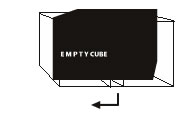FRANCISCO QUEIRÓS
MARCH, 28, 2011

CONTACTS
www.franciscoqueiros.com
hello@franciscoqueiros.com
EXHIBITION INFORMATION
MY BODY IS THE ROCK´N´ROLL TEMPLE
250 x 250 x 170 cm
cardboard, raw cloth, polystyrene, olive branch, velcro, wood, electric wire and 40w light bulb
4 loudspeakers on wooden stands,
audio amplifier and player,
dur: 10.18 min,
2011
(EMPTY CUBE 300 x 300 x 300 cm; distance from the first loudpeakers: 200 cm)
participants: antónio simão, alexandra viveiros, francisco queirós, francisco soares, rita rocha
credits: gg allin at the jane whitney show, 1993, watch me kill - gg allin with the criminal quartet. carnival of excess, 1995
thanks:
alexandra viveiros,
alice geirinhas,
ana cristina,
antónio simão,
sérgio duarte and a very special one to francisco soares,
nancy dantas e carlos marzia - marz galeria
- - - - - - - - - - - - - - - - - - - - - - - -
> posters | desenhos / drawings:
my body is the rock´n´roll temple
mixed media on serigraph, size: 66 x 50 cm,
18 signed and numbered prints,
2011
- - - - - - - - - - - - - - - - - - - - - - - -
die v.2
vídeo / video > kneecam n.º 1 - the original Techoviking tape from 2000 @youtube
áudio / audio > ana malhoa - "borboletas" @ praça da alegria. 12 de novembro de 2009 @youtube
dur: 3.28 min,
2009 - 2011
- - - - - - - - - - - - - - - - - - - - - - - -
The project brought by Francisco Queirós to EMPTY CUBE develops itself in the intersection of a variety of plastic, visual and performative languages, and takes the form of a single stage presentation, based on the "marionette portée" technique.
This action, in which Francisco Soares took part, comprised a video projection (an adaptation/appropriation of a Technoviking online video, shot during a Berlin parade), a limited edition of 18 original posters to be picked up by the spectators, and the in situ performance of a dramatisation of a talk show featuring Kevin Michael, a.k.a. GG Allin (Jesus Christ Allin, 1956-1993), a US punk rocker notorious for his provocative, extremist and transgressive exploits.
The environment Queirós created for this short (a few minutes) presentation is the product of an in-depth knowledge of exhibitive mechanisms, as well as of the communicative qualities of events and their reception by the public. Queirós put to use all the elements that make up EMPTY CUBE as an ephemeral initiative that establishes a straightforward, performative and short-lived relationship between the public and the artistic project.
In his work, Francisco Queirós weaves meta-narratives in which he combines fictional magic (sometimes evocative of a children’s tale) with random episodes or stories associated to comic books, or to such cinematic subgenres as cartoons, fantastic films and thrillers. Resorting to a variety of media, such as drawing, video and installation, the artist creates ironic, sometimes seemingly transgressive tales in which a cruel, stark innocence confronts us with the limits of the body’s representation, sexuality, freedom and ethics.
“MY BODY IS THE ROCK’N’ROLL TEMPLE” brings into confrontation several varying degrees of production of meaning and language forms, in order to question the social imaginary from talk shows as a communicational paradox. The video projected that preceded the stage performance showed a clip, taken from the internet, combined with the sound from a Portuguese TV talk show that included a song performed by Ana Malhoa. Even though the musical genre is different from the original techno soundtrack, the piece’s sound editing contains the conceptual key to the whole project. Francisco Queirós combines many different typologies and meanings, repositioning before the spectator genres that exemplify the trajectory of spectacularity as the agglutinator of an undifferentiated audience, independently from any ethical or moral criteria (thus reactivating Guy Debord’s views on mass culture and spectacle market conditions), but avoiding simple commentaries of a literal, pamphletary or openly political nature. The theatrical performance, visible at first as an installation within the built premises of EMPTY CUBE, consisted of a table on which the marionette sat, and a text that acted as both a performance script and a prop for Francisco Queirós’ playback lines. All the action has been developed around the puppet’s manipulation (by Francisco Queirós and Francisco Soares, who moved both its arms and sometimes its body). The puppet was a stylised figure sitting in a wheelchair; the whole was made from humble materials, with no costume props. The stage play took place outside the cube’s space, which received the compacted audience, as if they were inside a cage. The relationship between the interview’s contents, the staging and the (arena-like?) audience is illustrative of the hybrid and ambiguous approach Queirós employs to work on language’s various codifications, its channels and means of diffusion and the spectator’s rapport with the image and its meaning.
João Silvério
April 2011




